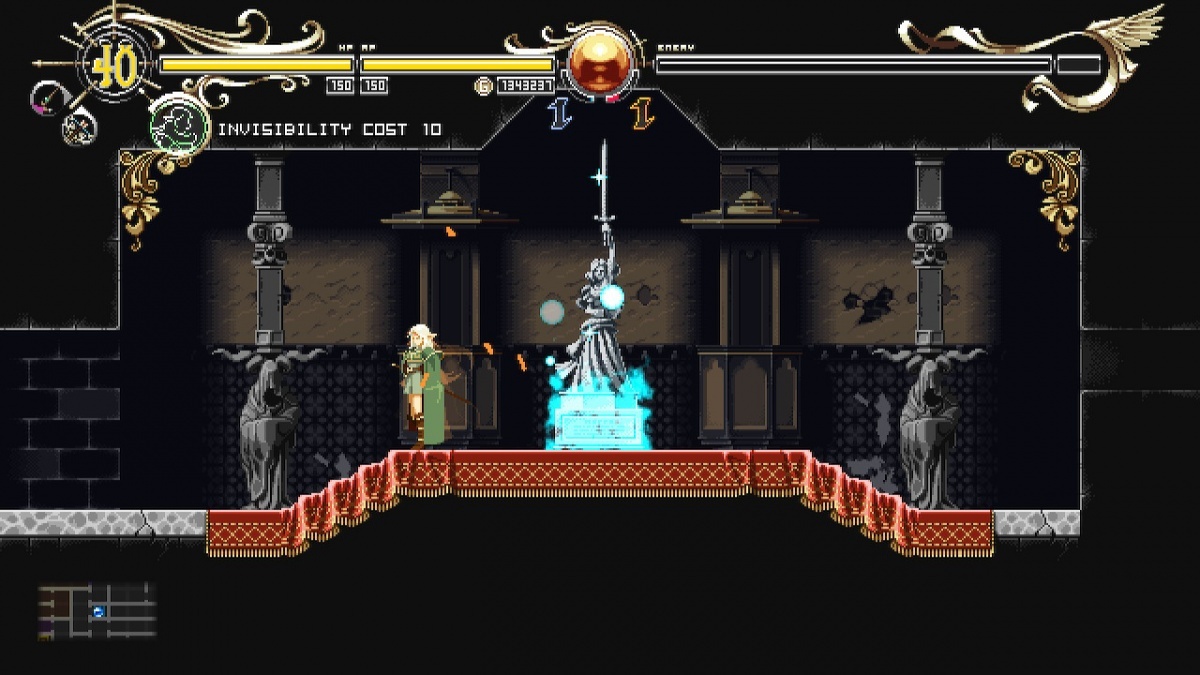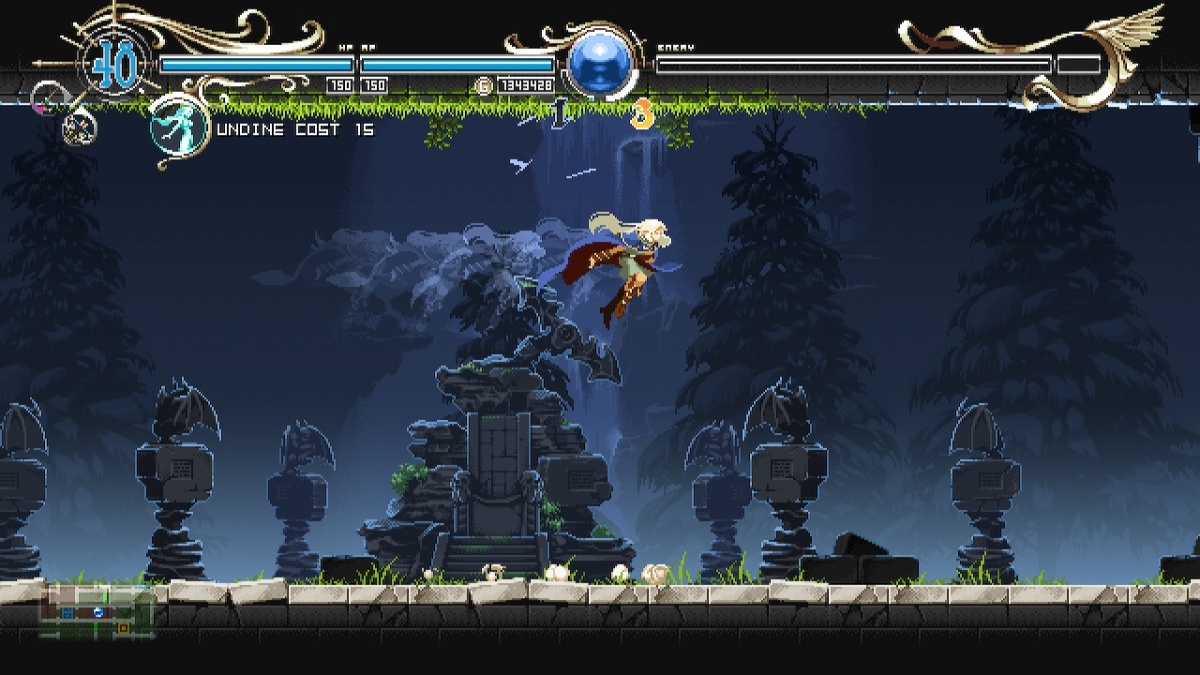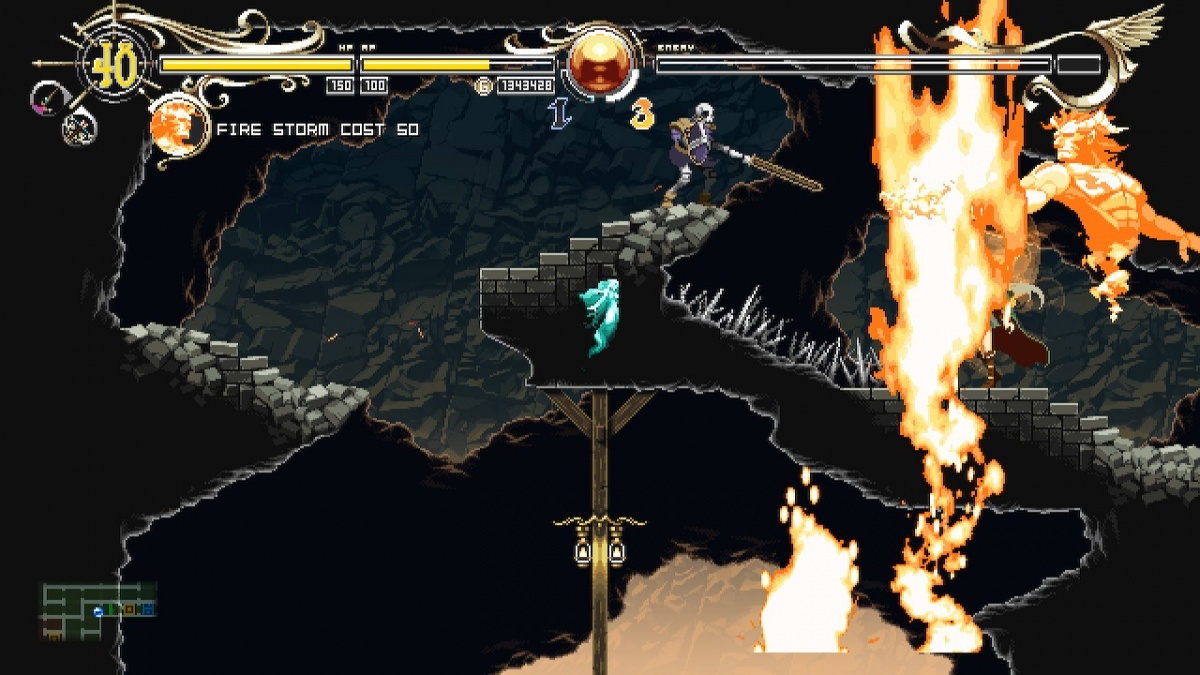Record of Lodoss War -Deedlit in Wonder Labyrinth- (Nintendo Switch) Review
By Rudy Lavaux  27.04.2022
27.04.2022

The Record of Lodoss War franchise is not exactly new, but it made quite a splash when it started in the late '80s, first as fantasy novels, then perhaps more famously (in the West anyway) adapted into manga, anime, and of course, video games. The typical fantasy quest story that drove the series for all those years centres on the human hero Parn, his romantic interest Deedlit the High-Elf, and their party of adventurers. It has proven popular enough that 30+ years later, new media still gets created around those characters. In this case, the adventure follows Deedlit in the so-called 'Wonder Labyrinth,' in what is essentially a Castlevania in the vein of Symphony of the Night in everything but name, which of course is a good thing, especially in the current situation of Konami refusing to create anything new that is not a pastiche adaptation of their better creations of yesteryears.
In terms of its plot, unless the player is a hardcore fan of the Record of Lodoss War mythos, this game will sadly be very hard to make sense of. Indeed, players are thrown in with little to no introduction of the characters, or what their story is, or how they relate to one another. The most one can understand is that Deedlit is looking for her lost love Parn in the labyrinth, and that other characters from the franchise appear from time to time to either hinder her efforts, or help her. That's it! If this was a JRPG, this would be a huge issue. However, just like the story of something like Castlevania: Symphony of the Night is just a pretext for a game that offers great gameplay, as well as fantastic music and graphics for its time - the plot here turns out to not matter much and doesn't deter from the rest of the experience at all.
It's just a minor inconvenience that, whenever the action stops for a conversation, Deedlit just calls out the name of the character and you don't know where she knows them from or anything. The important thing is this did not make this reviewer want to stop playing at all. The motivations of the characters within the context of this title are however made clear enough to drive the action forward, and give enough motivation to pursue the villains, that much can be said. Voice acting would perhaps have been good, but this was probably outside the scope of the budget, especially if the developer was going to have to hire the original voice actors for this otherwise rather large cast of characters.

Many of those actors are legendary in Japan (Parn in the anime is voiced by the same actor who voices Trunks in all Dragon Ball media, for example), and Japanese audiences care massively about consistency between media as voice acting is concerned. The lack of voice acting is therefore understandable. So, minor gripes with the story aside, everything else this had to offer turned out to be a genuine blast, the likes of which one wishes Konami would still produce with Koji Igarashi at the helm… if anyone there is still listening to the fans. Deedlit controls superbly and has a speed and smoothness to her controls and animation that just captures the fan of Alucard inside. All the traditional Castlevania tropes in terms of character movement options are included: you can jump and later double jump, backdash, attack in just about every direction both on ground and in mid-air, hover in mid-air, slide on the ground, and so on.
Where things take a turn for the more original is that Deedlit quickly encounters two spirit familiars, Sylph and Salamander, which when activated make her attacks stronger against enemies of the opposite type, being wind and fire respectively. More critically, Deedlit becomes immune to fire when Salamander is active and the same goes for Sylph with wind-based attacks. This is very important, especially in boss fights where projectiles of one element or the other can quickly fill the screen or even intermingle in clearly defined patterns akin to something like a bullet hell shooter game. This actually reminds a lot of Ikaruga and is a joy to find used in a metroidvania.

Absorbing magic attacks of the same element fills Deedlit's magic meter, which can then be used to cast magic spells that are unlocked by finding them scattered throughout the castle, meaning that switching to the right element at the right time, and using this unique feature wisely turns the player into a powerhouse, which gives a sense of strength and control that is thrilling all the way through, especially as things can get really tough towards the end. Finally, and crucially, defeating enemies with the power of one familiar makes them drop cubes that power up the other up to three levels. This level increases Deedlit's damage output using that element. At the maximum level of three, Deedlit will automatically get healed with that familiar selected.
Note, however taking a single hit will bring that power level back down a notch, so it is important to dodge effectively to take full advantage of this aspect of gameplay. The one thing perhaps that sets this metroidvania apart, is the focus on combat - more so perhaps even than exploration. Secret areas are few, and reaching 100% map completing is neither very challenging, nor will it take very long - anywhere between five to 10 hours at most to have most things completed 100% in fact. It is therefore more a title that absolute fans of the genre will like, and its focus on advanced fighting and moving will make it a speedrunner's favourite, no doubt.

From a visual standpoint, it's hard not to see similarities with, once again, Symphony of the Night. The pixel art used here mimics perfectly the art style of the PlayStation classic, albeit running in a 16:9 aspect ratio that uses square pixels instead of the anamorphic 4:3 found on the 32-bit machine. This one here runs at a native 640x360. If this doesn't sound like much by today's standards, it's perfect for the art style it is trying to achieve and is also the absolute perfect soft spot for perfect integer scaling to higher resolution screens. In handheld mode, this translates perfectly to the native 1280x720 of the Nintendo Switch's integrated panel, with a 2X scale and in docked mode - this also matches a perfect 3X in the switch maximum video output of 1920x1080. Furthermore, should the Switch docked and connected to a 4K display, the latter should have no issue scaling that up from 1080p without introducing any pixel crawl effect in scrolling scenes.
This is also a delight in the audio department. It may not have voice acting (cringy or otherwise if one is to compare it to its Castlevania equivalent), and the soundtrack may not be quite as memorable, but it is nonetheless pristine sounding and thoroughly catching all the way through. This also all runs superbly, with one caveat: on Switch, slowdown can manifest itself early on whenever a tutorial text box gets displayed over the actual game graphics. Luckily the player is never in any danger during these learning sessions, and they only take place early on, when new gameplay elements get introduced. During the action, this runs butter smooth.

Cubed3 Rating
Exceptional - Gold Award

It's not often that you find a Metroidvania that actually measures up to its models, while still managing to put its own attractive spin on the old formula. Record of Lodoss War -Deedlit in Wonder Labyrinth- absolutely delivers and manages to capture the Symphony of the Night look and feel brilliantly, while still being its own title. There are only two real drawbacks that keep the experience from being perfect: performance can have dips, manifested with slowdown rather than dropped frames, but only in circumstances where it doesn't affect gameplay at all. Then, newcomers to the Record of Lodoss War universe will be left completely lost as to who the characters are, and how they relate to one another, making the story tough to care for. Everything else however feels perfect and proved memorable in a way that Konami's eponymous franchise always managed to deliver with its 2D incarnations.
Review copy provided by Playism

![]() 9/10
9/10
![]() 0
(0 Votes)
0
(0 Votes)
 Out now
Out now  Out now
Out now  Out now
Out now  Out now Also on
Out now Also on 
Comments
Comments are currently disabled

 Sign In
Sign In Game Details
Game Details Subscribe to this topic
Subscribe to this topic Features
Features





 Top
Top

